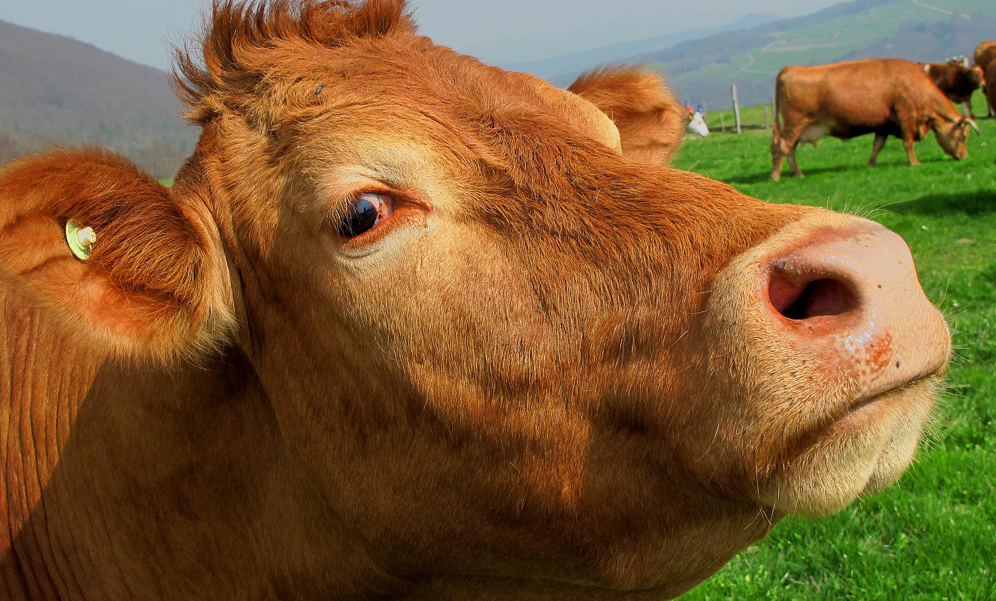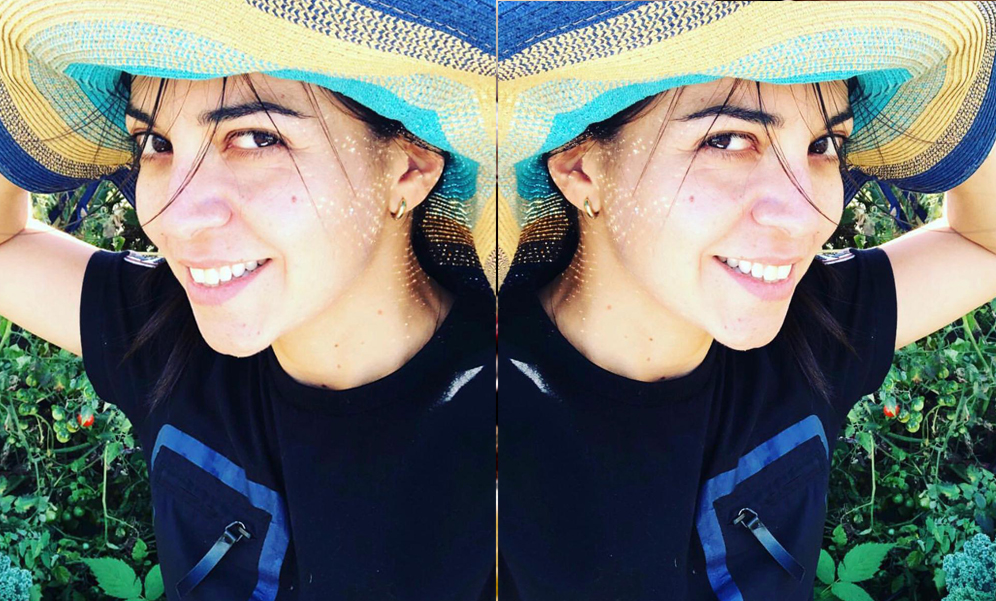Research and science are clear about the impact our current behaviour and lifestyles are having on the planet. We need to become more conscious about the food we eat in regards to our wellbeing, our fulfilment and the future health of the planet.
The damage

Even though we do not want to accept it since their taste is delicious, meat and dairy are doing more harm to our planet than cars, and even more than the emissions from all the transportation sectors combined together.
Actually, there are 1.5 billion cattle worldwide by the latest count and countries like the United States have more cattle than people (South Dakota, for example, has 4.6 cows per person).
I am delighted with the new canadian food guide: against any powerful lobby, the federal government has made dramatic changes introducing a simplified approach that encourages eating home -grown products, hydration, and taking the time to eat and enjoy our food. In fact, it totally reduces the emphasis on meat and dairy it used to give.

Seeing the dramatic change coming from such an influential source makes me hopeful about the possibility to give a chance to our society and to our planet.
Knowing where the food comes from
And don’t take me wrong, I am not saying that you have to become a vegetarian to save the planet: I believe we have to explore other great protein alternatives and try to take advantage of all the benefits of eating good food, the one we know where it comes from. This action taken for the good of our health will end up doing good to the planet as well.

Lately, we have lost track of where our food comes from. Everybody knew the source of their food 70 years ago. At that time agriculture was a sort of art in that society’s lifestyle while today most of the products we buy don’t tell us anything about their origin, and sometimes we don’t even care to know. This attitude is making our bodies miss so much of the good that quality ingredients can do to our health!
Some people believe it is a bit snobbish to think about what we are eating but let’s face it, we just don’t want to bother to think about the source of our food since some profit-minded people or corporations are doing the job for us.
Author Joanne Will, a Food expert Journalist stated in her article “The challenge of eating sustainably”: … “Many grocery stores are not set up to help us make smart choices and choices that are good for our health are often those that have the least impact on the planet.
Grocery stores can bombard and confuse us by highlighting products from which they make the most profit (ones that are cheap, mass-produced and filled with preservatives to extend their shelf life).
From the moment we step through the door, we’re bombarded by pitches for foods that are unhealthy and placed front and center to attract our attention. We’ve placed our trust in these stores to feed us, and in the process we’ve lost sense of where our food comes from.”
It’s all about emissions
As the Food and Agriculture Organization of the United Nations (FAO) points out, emission intensities vary from commodity to commodity. They are the highest for beef, followed by meat and milk from small ruminants. Cow’s milk, chicken products and pork have lower average emission intensity.
FAO reports that livestock now use 30 percent of the earth’s entire land surface, mostly permanent pasture but also including 33 percent of the global arable land used to produce food for livestock. Breeding and grazing livestock occupy today most of the available land worldwide while only 5 per cent is used to grow crops that are directly consumed by humans. However, that 5 percent provides 80 per cent of the calories that humans consume.
“Fast foods, produced en masse for the masses, are high in crave-ability but also addictive with high fat and sugar content, and produced using unsustainable practices that make them cheap, readily available and visually attractive” Joanne Will explains

Plants that are necessary to remove carbon dioxide from the atmosphere are destroyed, forests that protect the soil and provide habitat for the creatures that keep our ecosystem healthy are cleared to create new pastures: we should not forget that in Latin America in particular, some 70 per cent of former forests in the Amazon have been turned over to grazing.
Let’s go back to the times when we used to know the source of our food and when we used to spend some time in preparing our meals ourselves. How? Taking small steps to get to change our habits: trying to make a fast, drastic transformation would just end up in failure.
We can commit to vegetable-based soups and a stew once a week; then we can try a week without meat or, if you are good enough, you can try not eat red meat for a month while discovering what substitutes can be found in your town.
Being creative and searching for new options
Be creative in your cooking and think that you are feeding yourself on the best from the Earth.
Another idea that could help you carry out the change can be to discover the farmers closest to you.
Try eating only local foods (“0 miles products”), or at least be sure that half of your groceries are from local production. Take another step by starting to know your butcher, farmer or bee-keeper.
From my own experience I can say that a homemade mushroom curry is more special and satisfying than a full plate of fried chicken from an unknown source…..
Tips to start a change that is good for the planet but good for you:
** Buy as much seasonal produce as you can.
** Eat less animal products.
** Buy fair trade.
** Compost your food waste.
** Start a little garden of your own.
** Shop for bulk items.
** Ask for the “ugly” fruits and vegetables.
** Eat less processed and packaged foods.
Besides Canada and some mediterranean and asian towns that culturally respect and value their local products, also many chefs and professional cooks lead by example, draw attention to the environmental and health issues and act to provide a sustainable, exciting eating experience at their restaurants by creating incredible dishes that change with the season.
The change is in us
They look for the best ingredients from around their towns and closest areas: cultivated plants grown from traditional seeds, wild-harvested plants and mushrooms, flowers, saps and roots, local fish, sustainably raised, pastured meat, poultry and eggs from small farmers that obviously taste 100 times better because nothing artificial makes them have a longer life.

Will concludes: “In the end, being mindful of what we eat and getting to change our lifestyle means cutting back on foods that need much more land, water and emissions to be produced. Eating meat less often and being more careful about the meat we eat also make it a really special treat for our palates.
In conclusion, we need to go back to the joy of harvesting our own vegetables or at least purchasing ingredients at farmers’ markets or shops that list the source of the products they offer.


